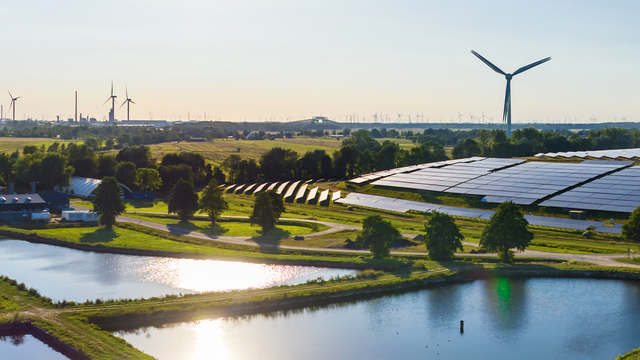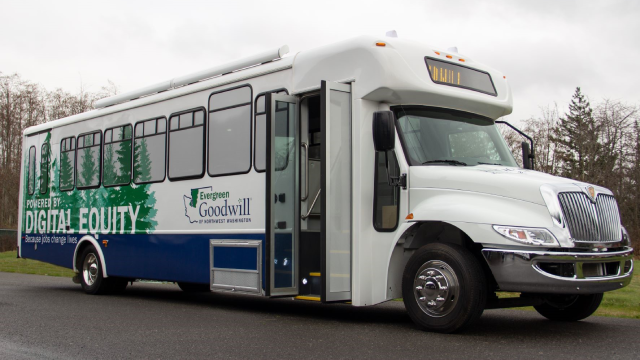Once just an industry buzzword, 5G is now truly on the horizon, promising faster communication speeds and ultra-low latency. As Internet of Things (IoT) connections scale from millions to billions, carriers have begun to hone in on this next generation of wireless technology by launching 5G trials and test beds in various markets throughout the United States. Consequently, they’re finding that the establishment of 5G is less of a single, enchanted event and more like clicking thousands of LEGO® pieces into place.
As part of this evolution, carriers are tackling capacity requirements by creating dense zones of small cells and distributed antenna systems (DAS) to help form the 5G network that will support our leaps-and-bounds technology advances. Accordingly, densification programs will be the biggest market driver for outdoor small cells growth, and installation of nonresidential small cells will leap 36 percent by 2022.
Also serving as a key piece of the 5G puzzle, carriers are deploying fiber to provide wireless backhaul from small cell sites and pushing fiber closer to the user to meet their growing capacity needs. A Deloitte Consulting LLP analysis estimates that the United States requires between $130 billion and $150 billion over the next five to seven years to adequately support broadband competition, rural coverage and wireless densification.
While its full range of capabilities has yet to be defined, 5G is sure to build upon the progress of its predecessors. The GSMA, a trade body that represents the interests of mobile network operators worldwide, expects that we will not see the full scale of 5G network deployments until the post-2020 period — the 5G era. This era will usher in limitless connectivity and intelligent automation, transforming the way we live, work and communicate.
Enabling the "Smart" in Smart Cities
Despite a growing cache of innovative smart city applications, smart is not a sure thing. The uptick of mobile data services, escalating subscriptions, and IoT connections sends data traffic soaring, which reduces network capacity. Total mobile data usage in the United States and Canada will grow by 35 percent annually through 2021, with North America predicted to lead the world in mobile data traffic at 22 gigabytes per smartphone.
Alongside wireless data growth, Ericsson’s North America Mobility Report (2016) estimates that 3 billion IoT connected devices such as activity trackers and connected thermostats will link into the network by 2021. The 2018 Strategic Directions: Smart Cities & Utilities Report survey indicates that funding priorities in cities mirror these regional data trends. Survey results reveal that 34 percent of municipalities rated high-speed data networks as one of their top three priorities. (Figure 1).
Figure 1. What are the TOP THREE most important systems a “smart city” program should invest in first? (Select three choices.)

This prioritization is not without reason because communities are already seeing the benefits of smart applications that leverage today’s wireless networks. Industries such as health care, transportation, energy and manufacturing can expect to see positive impacts from the advent of 5G, and this effect will drive investment in wireless technologies in 2018.
According to a Harris Poll commissioned by wireless trade association CTIA, 80 percent of business leaders in these industries believe their businesses will benefit from 5G, and 62 percent intend to spend more on wireless advancements this year. For the utility sector, 5G technology will help unleash the next wave of smart grid features and efficiency through low-cost connections, improved monitoring capabilities and better forecasting of energy needs.
In transportation, 5G will help drive revolutionary advancements such as the autonomous vehicle (AV) market. Many industry leaders think that cellular systems, specifically 5G, will be best suited to support AV. With greater capacity and faster broadband connection, 5G will allow AV technology to scale more quickly.
In addition, 5G will help AV integrate with smart city functions — such as real-time traffic information and ride-hailing applications — and other advanced technologies. Similarly, smart city innovations in public safety are a hot topic for the telecommunications industry, and wireless technology is the driving force. 5G LTE for public safety communications will offer mission-critical services for voice, video and data that exceed 4G capabilities, which can lead to improvements in emergency response.
Seamless Integration: the Right Approach to 5G Deployment
Deploying thousands of small cell and DAS sites, along with backhaul fiber, takes time. While the Federal Communications Commission recently moved forward with plans to simplify small cell deployments in municipalities across the country, carriers are also streamlining their deployment approaches. Many are trading a multi-vendor approach for the self-perform approach. Carriers who use the self-perform approach engage one team to conduct uniform deployment of all phases and entrust one team representative to coordinate with city offices, such as utilities and permitting, on their behalf. This approach helps foster a mutually beneficial alliance between carriers and municipalities that is instrumental to smart city success.
In addition to streamlined deployment processes, carriers are seeing the benefits of multitechnology networks and how these once-siloed worlds are converging. The future is not wireless or wireline, but a seamless integration of both. Service providers are faced with the challenge of delivering advanced services with higher bandwidth requirements, and in many instances, their existing infrastructure is not meeting capacity demands. Adding capacity to these disparate networks comes with challenges, including disruption to cities and customers.
A better approach is to engineer for future needs and develop a holistic plan for network infrastructure that does more than simply add capacity to existing systems. A Converged Intelligent Network is one that has been engineered and deployed to anticipate long-term capacity requirements for high bandwidth services, provide low latency instantaneous connectivity and facilitate cross-platform machine to machine data sharing in the cloud for smart city applications. Delivering a converged network also reduces the permitting complexity, resulting in improved operational costs and better relationships with municipalities and utilities.
Municipalities in Support of 5G
It’s clear that 5G is coming, but what role can and should municipalities play in this evolution? With large wireless network investments forecasted by telecommunications operators in the next decade, municipal leaders can bolster the success of their smart city programs by taking steps to encourage telecommunications companies to invest in deploying next-generation infrastructure in their cities.
The shift from traditional macro towers to small cell sites, which often use city and utility infrastructure, will require more streamlined permitting processes and modifications to existing regulations. Municipal leaders should strive to improve process efficiency and reduce regulatory hurdles to support new deployment models required for this next generation. The reality is that, despite fever pitch interest, smart cities cannot fully emerge without expansive network capacity and coverage. With the right approach and advocacy, 5G technology can be the cardinal game-changer by transforming smart city imaginings into real-time innovation.








